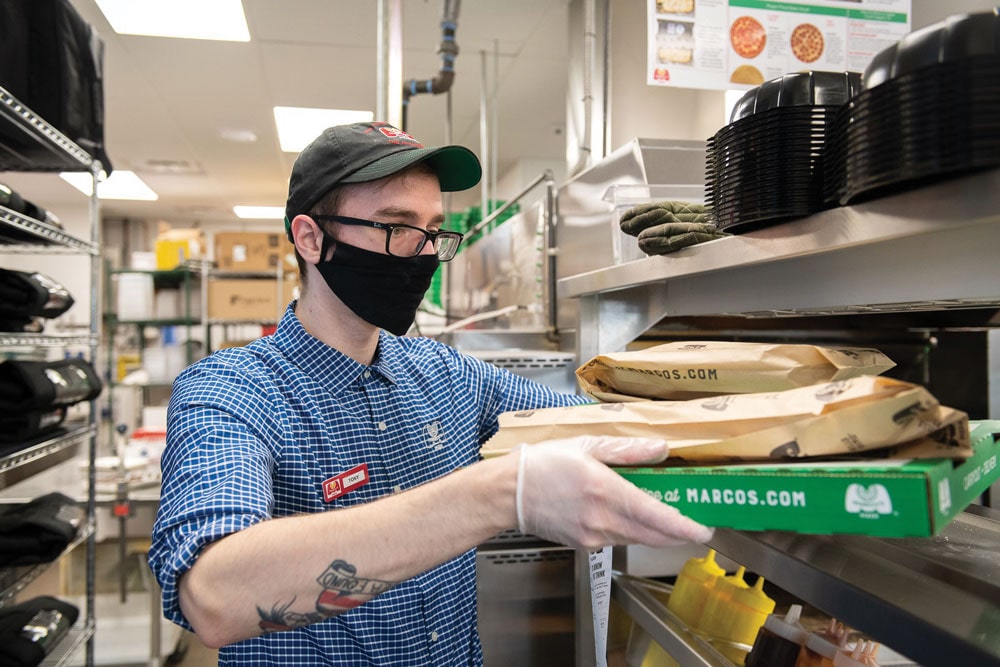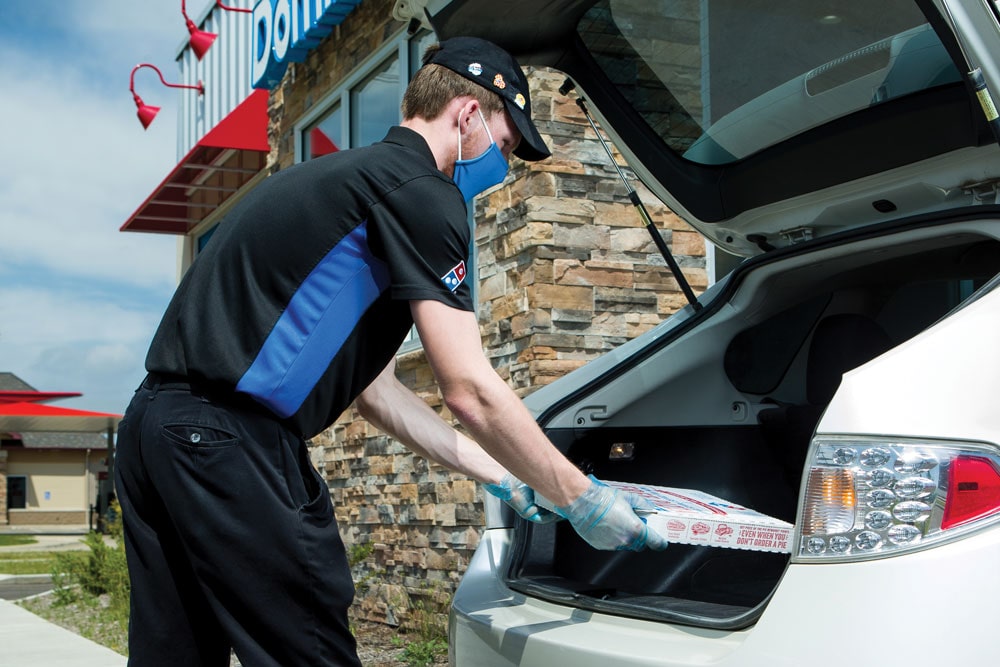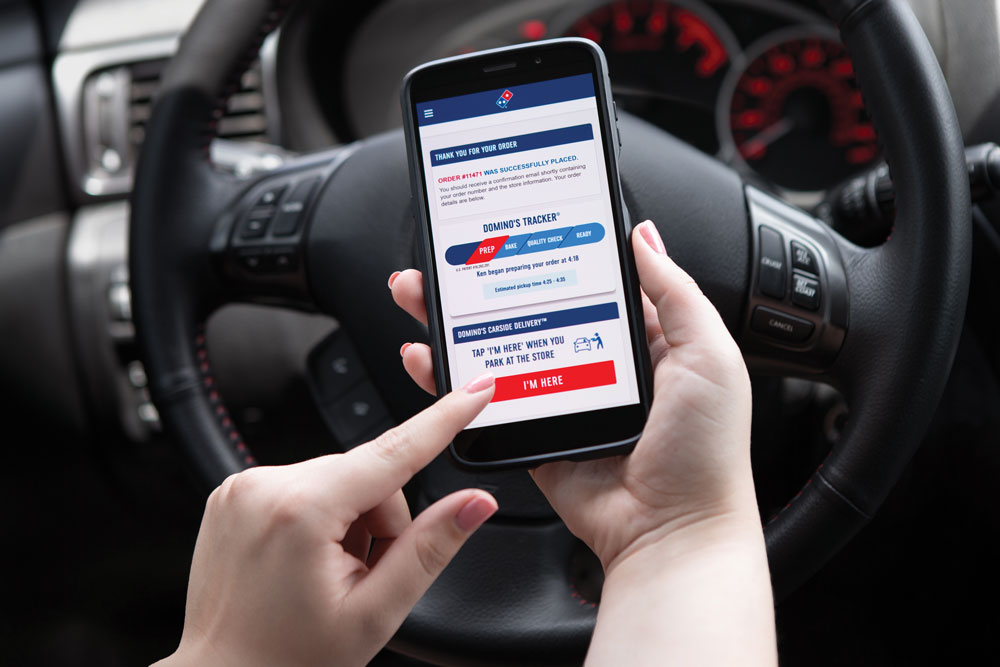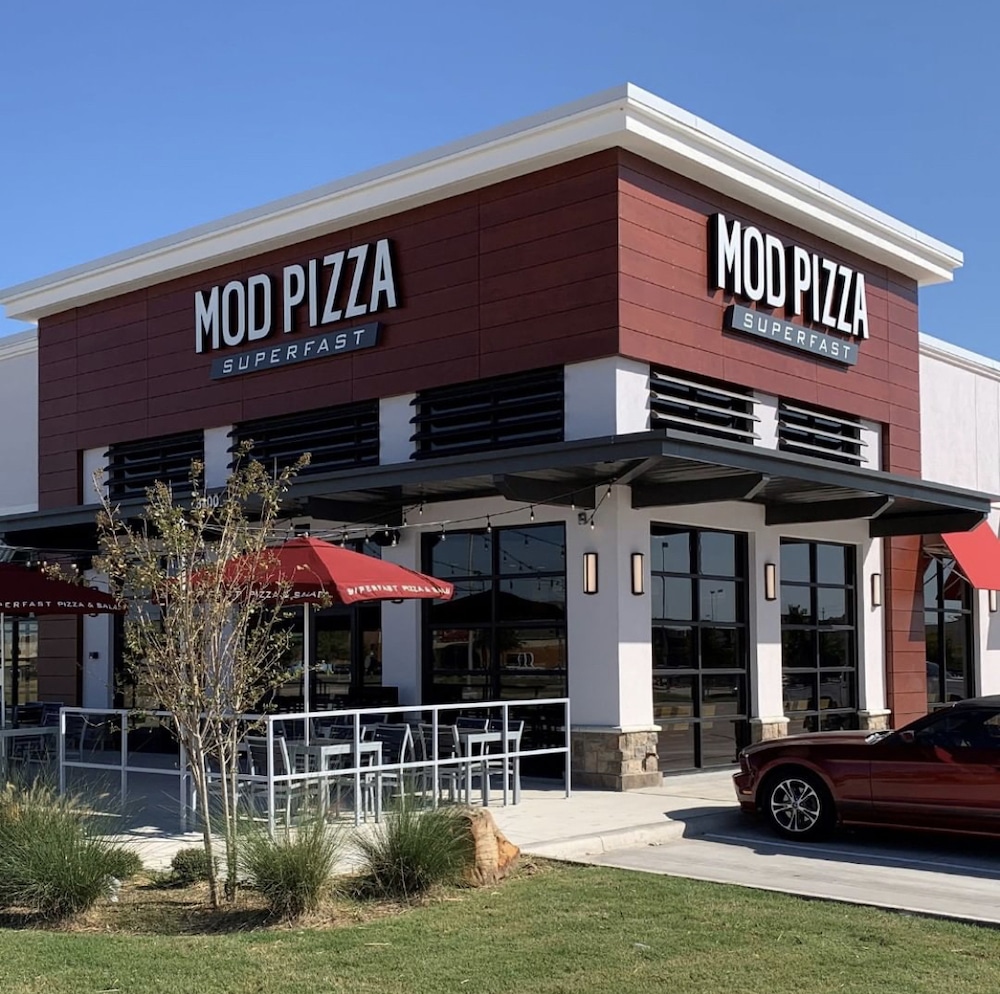By Tracy Morin
With limited dine-in capacity and closures continuing in pandemic hotspots, delivery and carryout are more important than ever before. A recent Zagat survey found that 88% of consumers are now ordering delivery—a 19% increase over the pre-pandemic figure of 69%. In fact, the survey reported that one in two respondents are ordering delivery or takeout at least once every week, with the average being twice per week.
To meet those demands, operators are making serious strides with their delivery and carryout systems—a process that, for many forward-thinkers, started long before those changes were necessary. Here, we offer some enlightening case studies from tech-savvy chains that are leading the charge, providing lessons that even independents can learn from and take on board.
Marco’s Pizza: Outlets of the Future
Based in Toledo, Ohio, with more than 900 locations nationwide, Marco’s Pizza now places a high priority on safe delivery and carryout. “We’ve always been looking for ways to enhance the transaction process to be more convenient for the customer,” notes Rick Stanbridge, VP and CIO for Marco’s Pizza. “But when the pandemic struck, we accelerated our innovation efforts to quickly and strategically engineer contact-free delivery and curbside carryout. These services allow us to keep both our team members and customers safe while we remained open as an essential business to serve communities nationwide.”

Marco’s Pizza is now putting a strong emphasis on safe and efficient curbside services at its more than 900 locations nationwide.
Now, Marco’s is in the process of piloting, testing and implementing several additional technologies, including SMS and beacons, to further automate contact-free delivery and curbside carryout. These technologies can be embedded into both the Marco’s app and its POS systems. “In addition to notifying the store when a customer arrives and letting a customer know that his order is available, we’re integrating various elements of artificial intelligence to streamline the process further,” Stanbridge says. “For example, once an order is placed, the customer receives an email confirmation. This confirmation allows customers to notify the store upon arrival, and a message is immediately sent to the POS system—sharing identifying information such as vehicle description and order number—so that the customer can be serviced quickly.” There’s also an option for customers to track an order to keep them updated every step of the way, allowing for seamless and safe exchanges.
Ron Stilwell, Marco’s VP and chief development officer, says the company designed its podular unit—a smaller operation (about 850 square feet) that focuses on drive-through and carryout with a walk-up window—prior to the pandemic. But the model, which also supports delivery, complements the “new restaurant era” ushered in by COVID-19 concerns, including the increased demand for a contact-free experience. “We have several franchisees in the process of piloting this unit, which will allow them to own and operate a Marco’s Pizza at a much lower cost while expanding our reach to areas that lack real estate options for a full build-out,” Stilwell says. “It shrinks the timeline from signing an agreement to grand opening, while still creating jobs, as the team member size is about the same as a traditional Marco’s Pizza unit (15 to 25 employees).”

Innovations like robotics and ghost kitchens are enhancing accuracy and speed, while lowering food costs, for maximum efficiency at Marco’s Pizza.
Meanwhile, Marco’s is meeting with various manufacturers on integrating robotics into its kitchens, with the goal of automating its high-traffic locations for efficiency and accuracy. “The primary benefit of this form of technology is speed—lowering delivery times and maximizing high-volume opportunities,” Stilwell notes. “At the same time, we need to ensure our quality standards are maintained, so we’re in the process of testing all of these aspects, which is very tricky.” However, one of the benefits Marco’s execs have seen in these tests is lower food costs—since robots are engineered to use the exact measurements of sauce, cheese and toppings, they reduce food waste and save money.
Finally, Marco’s is piloting virtual or ghost kitchens with franchisees in California, North Carolina and Houston. “These virtual or ghost kitchens are all about efficiency in a shared kitchen space and also allow us to easily use third-party delivery drivers and provide a quick-to-open format,” Stilwell explains. “Third-party delivery is booming, and one way to ensure customers the same great experience via a third-party app is to optimize your kitchen for those types of orders.”
Domino’s: Leading the Technology Charge
Anyone who’s been paying attention to pizza-related technological innovations can certainly look to Domino’s, which regularly rolls out new ideas for streamlined delivery. “Domino’s has a longstanding history of developing technology to bring even more convenience to our customers,” notes Danielle Bulger, public relations program leader for Domino’s, headquartered in Ann Arbor, Michigan. “In the last year alone, Domino’s has announced a number of innovations, which range from GPS delivery tracking capabilities to the use of e-bikes. We most recently announced Domino’s Carside Delivery, a contactless carryout option that customers can choose when placing a prepaid online order.”
The technology used for Domino’s Carside Delivery offers a unique identifier that separates the chain from other pizzerias’ curbside pickup. The Domino’s Carside Delivery is integrated into its ordering app and website, so when the customer clicks “I’m here” on the Domino’s Tracker page or replies to the opt-in text, the store is automatically notified, and a team member comes out with the order. “We launched the Domino’s Tracker in 2008 so that customers could track the progress of their order—from the time it’s placed to when it goes in the oven and when it’s out for delivery,” Bulger adds. “We always take customers’ feedback into consideration and think about what would bring them even more convenience. The same train of thought was applied when developing our lineup of AnyWare ordering technology, Pie Pass and Domino’s Carside Delivery.”

The POS system at Pizza Guys allows for real-time tracking, keeping employees on task and allowing customers to follow their order as it processes from make line to pickup- or delivery-ready.
Pizza Guys: The Right Track
With so many customers now relying on delivery, Pizza Guys, based in Sacramento, California, with 69 locations, has implemented the use of real-time delivery tracking at select locations. “When people order, they want to know what is happening with their food, which is why Pizza Guys uses the real-time tracker,” says Shahpour Nejad, CEO and founder of Pizza Guys. “This allows customers to see when their pizza is being made and packaged, and when it is sent out for delivery.”
This feature is built into the new Pizza Guys POS system, and customers don’t need to download any apps or programs; they can simply track their order on a web browser or on a mobile device, through the order page on the Pizza Guys website. If the customer provides a mobile number and does not opt out of texts, he’ll receive notifications on his phone.
Here’s how the tracking system works: When a customer places an order, a ticket is generated in Pizza Guys’ POS with the full order. The ticket appears on the tablet at the first station (slap station), and the customer will see “order placed.” Once dough has been slapped and sauced, the employee presses a green button on the ticket that says “slap.” The ticket and the pizza get passed down to the makeline, where toppings are added, so customers see “making” on their end. The ticket will then show on the tablet above the makeline. When the employee finishes adding the toppings, the pizza is placed in the oven, and the employee presses the green button that says “makeline” again, and the customer sees “baking.” The ticket will then show on the tablet at the cut table. Once the pizza is baked, the employee cuts and boxes the pizza. The employee then presses the green button that says “cut table” for the ticket.
“For a pickup order, once that button is pressed, the customer will receive a text message stating his pizza is ready,” Nejad explains. “For a delivery, that ticket will show on the tablet where we dispatch drivers. When a driver goes for delivery, he will press the green button on the ticket that says ‘dispatch.’ Once that button is pressed, the customer receives a text stating his order is out for delivery.”
One caveat: The Pizza Guys tracking feature does not track its drivers when they are out for delivery, so customers don’t know where the driver is. “Customers have to estimate the time for delivery based on how far the store is from their house,” Nejad says. “This is not a huge issue, but there are times when customers expect their order to be there sooner than our estimated time given.”
“Virtual or ghost kitchens are all about efficiency in a shared kitchen space and also allow us to easily use third-party delivery drivers and provide a quick-to-open format.”
— Ron Stilwell, Marco’s Pizza
Pieology: Delivery-Capable Crust Development
The fast-casual outlet Pieology, based in Tustin, California, with 130 locations nationwide, noticed a rising global trend in delivery years ago. So in 2017 it created a crust type specifically optimized for delivery and carryout. “We felt it necessary to invest our resources in developing a crust that travels well, because we want our guests to experience Pieology pizza at home and work that’s as close to the in-store experience as possible,” notes Yulree Tio, senior manager, brand marketing at Pieology. “Though all of our crusts can be enjoyed outside of the restaurant, the thick, fluffy crust we developed—crispy on the outside and soft on the inside—makes the PieRise Thick a fan favorite for delivery. With more people looking for off-premise options now, we’re on the right track by providing guests quick, convenient and restaurant-quality food that travels well.”
To attract interest, the company recently launched a value offer for guests, featuring two PieRise Thick Crusts for $14.99, called the Duo Deal. “In the spirit of constant improvement and listening to our guests’ needs and desires, we’re also exploring innovative packaging, operational optimization, and nontraditional developments such as ghost kitchens,” Tio concludes. “These are all designed to drive the evolution of our delivery capabilities.”
Tracy Morin is PMQ’s senior copy editor.














